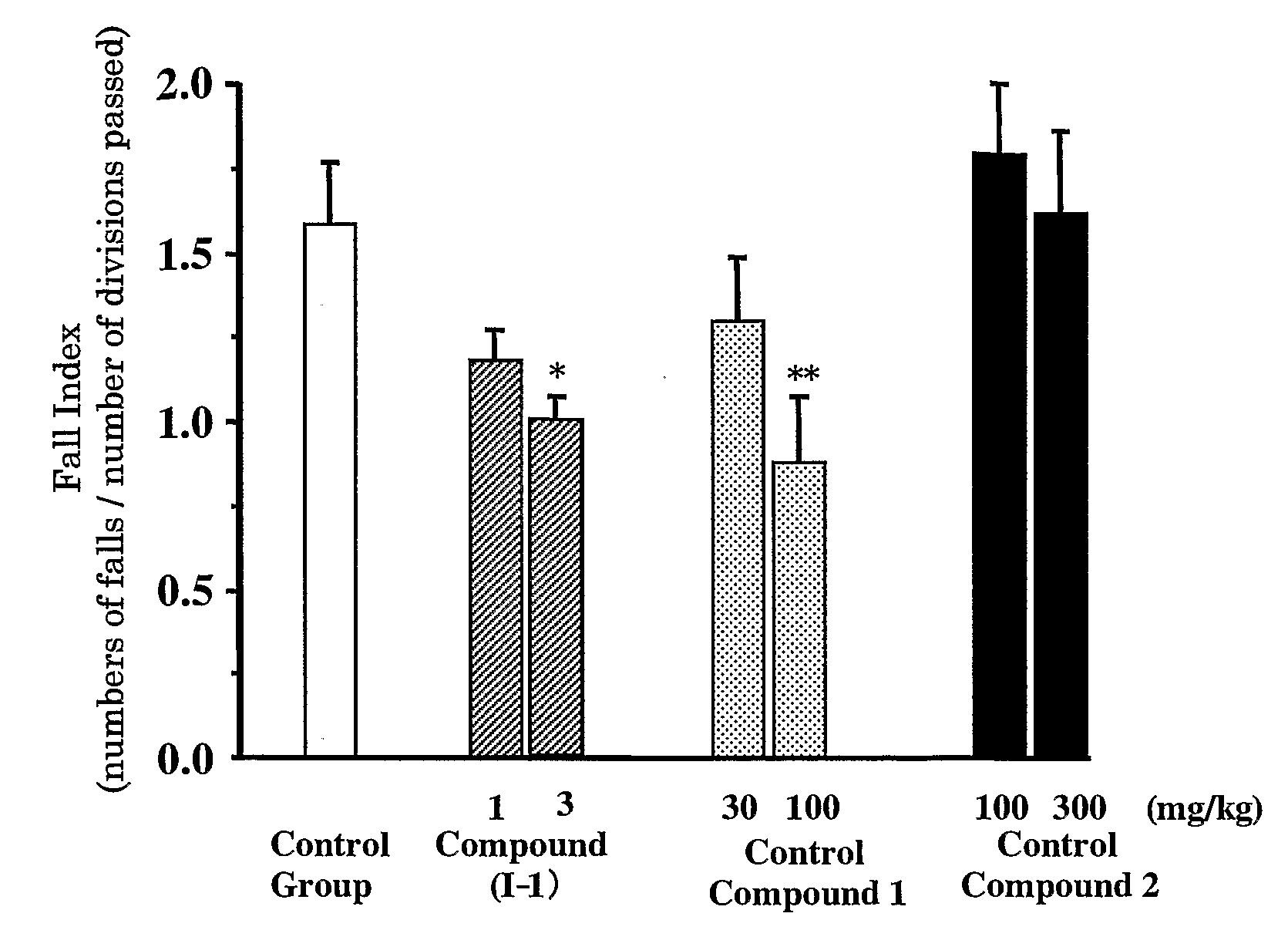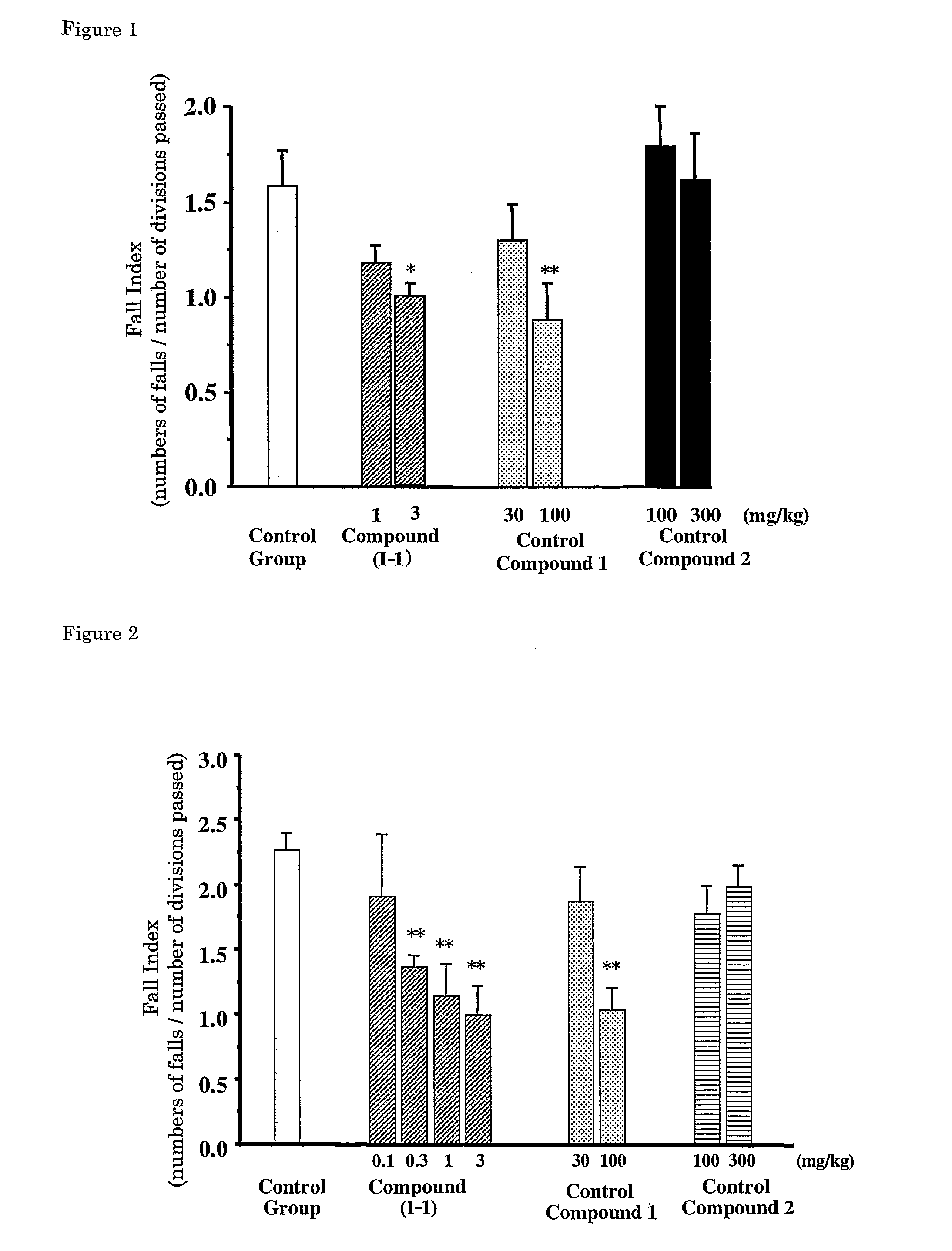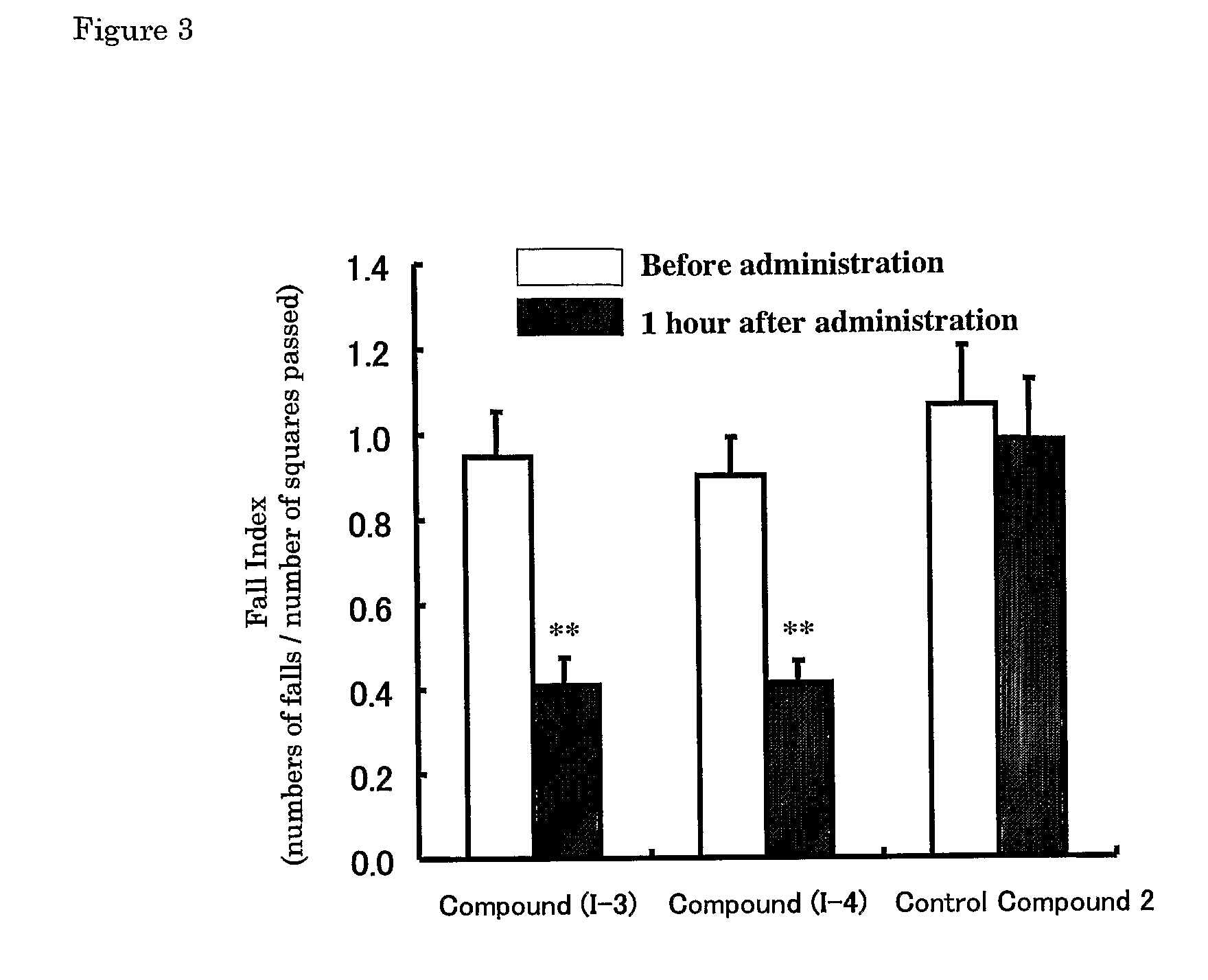Pharmaceutical Composition for Treating Spinocerebellar Ataxia
a technology of ataxia and pharmaceutical composition, applied in the direction of drug compositions, peptide/protein ingredients, metabolic disorders, etc., can solve the problems of pulmonary disease, asphyxia or sudden death, and achieve the effect of improving ataxia or equilibrium disturban
- Summary
- Abstract
- Description
- Claims
- Application Information
AI Technical Summary
Benefits of technology
Problems solved by technology
Method used
Image
Examples
example
Example 1
[0039]
Step 1
1-N-[N-(tert-butoxycarbonyl)-3-(thiazol-4-yl)-L-alanyl]-(2R)-2-methylpyrrohdine (3)
[0040] N,N-dicyclohexylcarbodiimide (10.83 g, 52.5 mmol), N-hydroxybenzotriazole (2.03 g, 15 mmol) and triethylamine (7.7 ml, 55.2 mmol) were added to a solution (130 ml) of N-(tert-butoxycarbonyl)-3-(thiazol-4-yl)-L-alanine (1) (13.62 g, 50 mmol) obtained by the method described in literatures (J. Am. Chem. Soc. 73, 2935 (1951) and Chem. Pharm. Bull. 38, 103 (1950)) and 2(R)-2-methylpyrrolidine p-toluenesulfonic acid (2) (12.79 g, 50 mmol) obtained by the method described in a literature (Helv. Chim. Acta, 34, 2202 (1951)) in tetrahydrofuran. The mixture was stirred for 20 hours at room temperature. After the precipitates are filtered off, the obtained filtrate was concentrated under reduced pressure. Thus-obtained residue was dissolved in ethyl acetate (200 ml) and the solution were washed with an aqueous solution of sodium hydrogencarbonate and water, successively. The org...
experiment 2
Effect of Improving Ataxia on Cerebellum-Injured Rat by Administration of Ara-C
[0090] Ara-C (60 mg / kg, Nippon Shinyaku) was subcutaneously administered to Sprauge-Dawley rats (CLEA Japan, Inc) of 2 days old and 3 days old, and the effects of improving ataxia on Compound (I-1), Control Compound 1 and Control Compound 2 at 4 weeks old were investigated.
[0091] The effect of improving on ataxia was evaluated with a fall index by an open-field method. Rats were left in the center of an open-filed (circle open-filed, 75 cm in a diameter, 25 divisions), number of divisions passed and numbers of falls for 3 minutes were counted, and a fall index (numbers of falls / number of divisions passed) was calculated.
[0092] Each of the compounds was dissolved in a physiological saline on the day of administration. Each compound was orally administered to rats using a sonde for oral administration at the following dosage; Compound (I-1): 0.1 mg / kg, 0.3 mg / kg, 1 mg / kg and 3 mg / kg, Control Compound 1: 3...
experiment 3
Effect of Improving Ataxia on Rolling Mouse Nagoya
[0096] Effects of the compounds described in Patent Literature 8 (1-3: R=CN, I-1: R=CONH2) and Control Compound 2 on ataxia on Rolling Mouse Nagoya were investigated.
[0097] The effect on improvement of ataxia was evaluated with a fall index by an open-field method. Mice were left in the center of an open-field (square open-field, 100 cm×100 cm, divided into 25 squares of 20 cm×20 cm), number of squares passed and numbers of falls for 10 minutes were counted, and a fall index (numbers of falls / number of squares passed) was calculated.
[0098] Each of the compounds was dissolved in a physiological saline on the day of the experiment. Each compound was orally administered to mice using a sonde for oral administration at the following dosage; Compounds (1-3) and (1-4) :10 mg / kg, Control Compound 2: 100 mg / kg. Volume for oral administration was 0.2 mL per 20 g body weight of a mouse.
[0099] Each of the test compound was orally administere...
PUM
| Property | Measurement | Unit |
|---|---|---|
| total weight | aaaaa | aaaaa |
| total weight | aaaaa | aaaaa |
| diameter | aaaaa | aaaaa |
Abstract
Description
Claims
Application Information
 Login to View More
Login to View More - R&D
- Intellectual Property
- Life Sciences
- Materials
- Tech Scout
- Unparalleled Data Quality
- Higher Quality Content
- 60% Fewer Hallucinations
Browse by: Latest US Patents, China's latest patents, Technical Efficacy Thesaurus, Application Domain, Technology Topic, Popular Technical Reports.
© 2025 PatSnap. All rights reserved.Legal|Privacy policy|Modern Slavery Act Transparency Statement|Sitemap|About US| Contact US: help@patsnap.com



